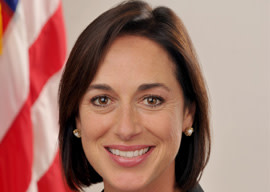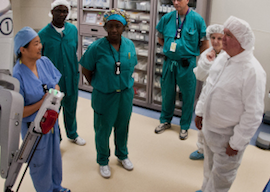
One night, not long ago, I was watching TV. As the evening’s programming unfolded, I noticed something unusual: a commercial for UnitedHeathcare’s #telehealth services. Thing is, the spot didn't seem out of place among the slick automobile and restaurant ads. Once I got used to the idea of an actual telehealth ad on broadcast television, it didn’t even seem surprising.
It seems that #RemotePatientMonitoring (#RPM) has been given a new time slot.
Some background. RPM services, such as telehealth, aim to improve health outcomes, lower costs, and speed up clinical decision-making. RPM refers to monitoring patients outside the clinic, in, say, patient homes, with the help of sensors, apps, and websites. Providers have long been aware of the benefits of remote monitoring and do not need to be convinced, but policymakers and payers were, for a long time, less inclined to see RPM’s charms.
#RemotePatientMonitoring has been given a new time slot.
Today, however, RPM is finally getting the attention it deserves—from every corner of the healthcare ecosystem. Medicare now reimburses providers for monitoring certain patients remotely. The policy change was introduced in Jan 2018, and includes RPM for tracking heart rhythm, blood pressure, and blood glucose levels. Kaiser Permanente reported that in 2017 more than 50% of its patient visits were completed virtually.
The #InternetofThings, #ArtificialIntelligence, and #BigData are helping remote patient monitoring reach new frontiers in a more effective manner. And these developments aren’t going unnoticed. In recent years, venture capitalists have increasingly invested money in #DigitalHealth startups. Rock Health reported that in the past seven years, over $23 billion has been invested in digital health startups.
Is our healthcare system really prepared to assimilate these new developments? Have care-delivery models advanced sufficiently to support such big changes? Designers in the healthcare space now need to take a stronger lead to help address the real question: How can physicians and patients leverage the benefits of RPM?
A typical remote monitoring workflow includes collecting relevant patient data, organizing and transmitting patient data securely and effectively, implementing care delivery models for remote monitoring, and providing timely information to patients.
• Insightful data is available, but how do you extract and communicate the value to physicians and patients? Today technology can collect mountains of data—steps, rhythm, sleep, movement—but this data needs to be clinically beneficial and allow for an efficient approach to solving problems to be valuable. For example, using the data collected can clinicians help improve a patient’s condition, diagnose a condition, or treat a condition? Or can the data motivate patients to take measures to improve their health and follow treatment plans?
When monitoring remotely, physicians will have zero, or at best limited, control over the patient’s monitoring system; therefore, it is vital that the patient and caregiver share equal accountability.
• How can you best ensure continuous data collection and security? An effective RPM system requires reliable infrastructure to transmit data, especially in rural areas where systems may still be underdeveloped. It’s also critical for patients to undergo data-transmission training and learn to troubleshoot minor typical RPM problems. And with the growing concerns around data privacy and security, patients must be educated on the risks of remote monitoring and data transmission.
• Now you have collected data, but who is accountable for it? Remote monitoring is a team sport. To play it right, the players need clear guidelines outlining the value and accountability of data. When monitoring remotely, physicians will have zero, or at best limited, control over the patient’s monitoring system; therefore, it is vital that the patient and caregiver share equal accountability. When designing for RPM, it is important to assign appropriate roles for each of the stakeholders: patients, care teams, and business operations staff such as legal, accounts, and IT.
• Does care redesign outpace the RPM innovation or is it lagging? In most cases, RPM can simply leverage the current decision-making process, while ensuring that the new workflow aligns with existing systems. For this, we have to rejigger base parameters by targeting the system towards the patients. For example, a workflow for physician intervention can be done by managing patients by exception. Physicians can intervene to look at patient data or alter treatment plans when the patient data collected, such as blood sugar levels or blood pressure, is out of specified boundaries. When the data is within bounds, no is action needed. We must identify rules that provide an indication of worsening conditions and when the rule is met, intervene to prevent a patient event. Care delivery redesign must keep pace as remote patient monitoring evolves, and new reimbursement must outpace care redesign.
RPM offers physicians a new role in their patient’s lives—the patient champion.
• Patients have access to their data, but is it improving the patient-physician relationship? RPM offers physicians a new role in their patient’s lives—the patient champion. RPM allows patients to occupy the driver’s seat, with physicians as navigators. For example, patients with Type 1 diabetes can self-medicate based on the treatment plan created jointly by the endocrinologist and the patient. Additionally, patients receive support on how to modify treatment plans when negative health events occur. The partnership encourages patients to be compliant, track overall outcomes, and improve their own care. It may well inspire them to share success stories, to inspire other patients to achieve their goals, and help providers to become more accessible to their patients.
•How can you innovate RPM systems? It's like any innovation: Build. Launch. Learn. Improve. Repeat. RPM solutions also require good usability and interoperability. This can be difficult to achieve, especially when behavior change is involved. Healthcare systems need to be nimble enough to pilot a remote monitoring program and incorporate feedback and learnings to improve their effectiveness. Continually.
RPM opens many new channels to make healthcare more accessible and affordable. The time is ripe for designers to lead the charge and enhance the overall experience. So let’s get off the couch, click off the TV, and get to work.




